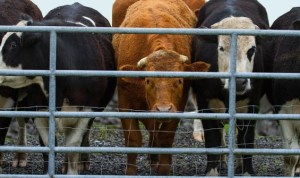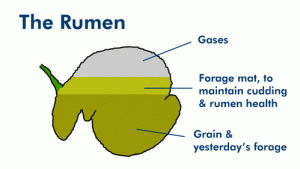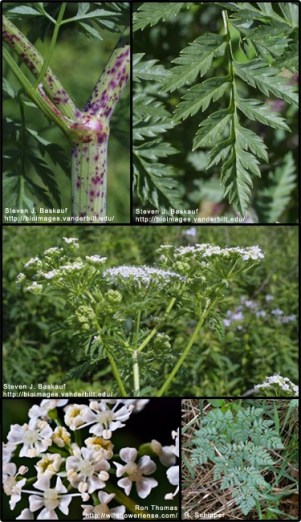Fwd: Spring Grazing
Bouressa, Rachel
From: Serge Koenig <serge....@saukcountywi.gov>
Date: Tue, Apr 6, 2021 at 8:47 AM
Subject: Spring Grazing
To:
A couple of good write-ups for spring you might find useful..
Can We Graze Now?
By Victor Shelton / April 13, 2020 / 2 Comments

Let us into the pasture!
Yes, there is green grass.
Yes, both you and the livestock are more than eager to utilize it.
Yes, you both should wait before grazing it.
It is one of the hardest times of the season for some people, me included. We are tired of mud and tired of feeding hay. There is an increasing amount of fresh new lush green grass beckoning to be grazed. Why shouldn’t you allow the cows to partake in this new growth? When is the ideal time to start grazing?
Let’s think this over a little.
What is the real problem with grazing too early? Forages have just woken up from a long winter’s nap, and now they’re making new food. That early growth does not come from photosynthesis, but from from energy reserves stored in the roots and lower shoots.
You probably remember some past conversations we’ve had about not overgrazing last fall, especially before the forages went dormant. Why? You wanted your plants to build root reserves to sustain themselves over winter and provide energy for new growth in the spring. Whatever energy was stored in the roots is now expressed in the speed of new spring growth. If reserves were withdrawn last fall, then it will take longer for plants to jump start this spring. If you turn around and let livestock graze too early, especially if energy reserves were withdrawn last fall, then not only is spring production going to be reduced, total production for the whole year will be reduced.
If you either deferred grazing last fall until the plants were dormant or you stopped grazing once you reached appropriate stop grazing wintering heights (generally similar to stop grazing heights during the grazing season, four inches for cool-season forages), then energy reserves should be decent and spring growth normally will be good. Those reserves that were built in the roots and lower shoots last fall provide energy for quicker and more abundant growth in the spring. Overgrazing in the fall, preventing build up of reserves and then turning around and initiating grazing too early in the spring or never removing them the entire time. Energy reserves are grossly hampered in this situation and total yield potential for the season is quite often reduced by at least fifty percent.
I’ve heard people say, “The cows didn’t lose anything, they consumed it all.” Yes, they consumed all that was grown, but the amount that was grown didn’t come close to the potential of the field. It all boils down to:
“it takes grass to grow grass.”

So, when should I initiate grazing in the spring?
Good question.
Fields that have good fast growth with reserves maintained over winter could be utilized for some grazing when forages are at least eight to ten inches tall. Try to remove no more than one third of the forage and then move them on to the next paddock/pasture. When forages are growing quickly, rotate quickly. Try to never remove more than half of the amount that was in the pasture when you arrived. We’re talking cool season forages this time of year, so you can’t go wrong with using four inches as the stop grazing height. Remember, stop grazing height is the shortest forages left standing, not the tallest. If the pasture is rotated correctly it will have a fair amount of forage, between four and six inches left standing.
Pastures that were grazed hard last fall, especially prior to dormancy, could use a longer deferment prior to grazing this spring. Those fields will need to grow some solar panel off the reserve left, and then spend valuable time rebuilding roots and root reserves before allocating energy and resources to growing forage. The plant is going to try and preserve itself and yield is the last thing on its mind; it’s thinking survival. Quite often you will find these stands initiating reproductive stages more quickly and earlier because of this survival mechanism. In some cases, some anti-quality factors in forages, such as alkaloids, may also be higher because of this.
In the long run, if you take care of the plant, the plant will help take care of you. Unless you have run out of hay or are calving in mud, wait until the grass is ready.
Spring is Sprung – Grazing for Best Results, Avoiding Toxic Plants and Preventing Grass Tetany
By Victor Shelton / April 5, 2021 / No Comments

Let us into the pasture!
Yes, it’s getting to be that time of year — new spring green growth! The cows start complaining about eating hay and bellowing when they hear my voice or even just see me. It’s not that the hay is any less delectable, it’s just not what they know is available across the fence. It’s about like a kid walking by a candy store; the focus is on the treat.
I’ve listened to several pretty intense arguments over the years on the topic of when to start grazing in the spring. Some spoiled cows are never denied their micro-greens and sadly, the pastures usually show it. I’ve heard some say, “the cows know best.” They do have excellent biological feedback from their stomachs that tells them there is usually more energy and protein in that lush new forage. This is even more true with small ruminants such as sheep and goats who can and will sometimes select specific plant parts because of differences in energy or nutrients that are needed at the time. Perhaps this is the ruminant animals “gut” instinct.
Unfortunately, just like eating too much candy from the candy store, ruminants eating too much lush green cotton candy growth early in the year can have its consequences. If you don’t believe me, let them graze that short new growth for two or three days and then run them through the cattle chute to work them. You won’t want to be the person tailing them in the chute. Like I’ve said before, don’t stand too close behind those cows! One cough or skuttle from the cow in front of you and you might be covered.

Graphic courtesy of Trouw Nutrition of Ireland.
What the cows try to initially ignore is the same thing your doctor may tell you: you need fiber. If that particular pasture was grazed down tight last fall and little or no residual was left behind, there is little or no fiber present. This young lush forage is rapidly fermentable in the rumen and may not meet two critical forage roles: maintaining the rumen forage mat and stimulating cud chewing. The rumen/fiber mat is essentially a mass of long-fiber plant matter that slows down and buffers the rumination and digestive processes of any other feeds that are consumed. It keeps the microbe balance, pH and digestive speed of the rumen stable throughout the day. All ruminant livestock need to balance the carbon-nitrogen ratio in their rumen to maintain that mat. If they don’t, then they will not perform the way you want them to and have less gain and milk production. The plants just go through their system faster than they can effectively utilize it.
If you watch the cows after early turnout, they will graze exclusively on the lush new forage for two to three days and if sufficient fiber is not present, they will quickly start hitting fence rows and eating about any dry material they can find and will actually eat straw too if available, something they would normally rarely do.
What’s the Solution?
Ideally, continue feeding hay until the forages have grown more and start containing more lignin. Lignin is a major component of the plant cell wall and give plants structure. Those fields grazed short last fall will lack sufficient fiber to go with all the washy, high-water, high-protein forage that will come on with first growth.
If stop grazing heights were maintained with the last grazing prior to winter, then that dry forage left behind can help to balance out the lush forage. Hopefully you’ve planned ahead and have at least one pasture with a fair amount of residual that you can use in the Spring to provide this balance. A pasture with four to six inches of residual is just right and can also provide a great alternative for calving over a muddy lot.
Another alternative is to feed some hay along with the new growth. The cows will then eat enough dry hay to help balance out the fiber needs to maintain that rumen mat. This is certainly better for the cow, but not particularly ideal for the forage. Grazing too early can reduce total forage production for the entire grazing season. Why? You’re removing the solar panel the plants need to start building sugars and growing new roots. Forages really need to fully leaf out to get a good start before animals start removing new growth or they’ll be stunted all season long. If the cows-to-pasture acres ratio is low, then starting to graze a bit early might help to keep growth under control later, but in most cases, the cows-to-pasture acres is higher than it should be and therefore, detrimental to overall production.
BEWARE OF TOXIC PLANTS IN SPRING

Courtesy of Michigan State University
That internal feedback that tells cows to add fiber to their diet, as I mentioned earlier, doesn’t always work quickly enough when it come to poisonous weeds. And with some plants it doesn’t take much to cause illness or death. Poison hemlock is of most concern. A lethal dose for a horse is four to five pounds of leaves. Cattle may be poisoned with one to two pounds, and sheep with a half-pound or less. Humans are often poisoned, mistaking the roots for parsnips, the leaves for parsley or the seeds for anise.
Poisoned animals show signs within two hours of eating the plant, and tend to become nervous, will tremble and become uncoordinated. After the excitement phase, the animal becomes depressed. The heart and respiratory rates slow down, the legs, ears and other extremities become cold, colic and/or bloating may occur. Even at this stage, the animal may not die, but may remain like this for several hours to days, and then recover. In lethal cases, the animals tend to die within five to 10 hours after the onset of the clinical signs, typically from respiratory failure (in which case the mucus membranes will appear blue). A mousy odor has been reported to emanate from affected animals. Contact your local extension office for more information on this plant or control methods.
I am already seeing a fair amount of poison hemlock in some fields and especially along roadsides and low areas. Poison hemlock looks a lot like cow or wild parsnips but has purplish colored streaks and spots on the smooth stem. This plant is toxic to both livestock and humans. As a true biennial so it will set seed the second year and it is a prolific seed producer — so kill it the first year! Do not handle with bare hands. According to Purdue’s toxic plant website, poison hemlock has toxic components that include the volatile alkaloids coniine and gamma-conicine.
Magnesium and Grass Tetany
I’ll end today with a reminder on magnesium. It is a good idea to move to a high magnesium type mineral supplement (usually 10-20% instead of 1 or 2%) and continue with it until we are past the early flush of new forage. The issue with insufficient magnesium is more of a problem where nitrogen and/or potassium has been recently applied or in excessive amounts. For more on grass tetany and it’s prevention, check out the article below, or contact your local extension service or large animal veterinarian.
Now, here’s to a great Spring grazing season. Remember, management of spring regrowth will impact overall production. The cows or sheep are the tools to help manage the forage!
It’s not about maximizing a grazing event, but maximizing a grazing season!
Keep on grazing!
Reminders & Opportunities
Purdue “Forage Friday Forum” – Friday noon ET from March 5 to April 16, individuals will discuss topics related to forage management for an hour. Flier Register at: https://bit.ly/2LlPnZK
More pasture information and past issues of Grazing Bites are available at https://www.nrcs.usda.gov/wps/portal/nrcs/in/technical/landuse/pasture/
Serge Koenig,
Conservation Specialist
Land Resources and Environment Department
Sauk County
505 Broadway St
Baraboo, WI 53913
Phone: (608) 355-4837 Cell #: (608) 477-3195
Fax: (608) 355-3292
1100 Main St, Suite 150
715-343-6215
